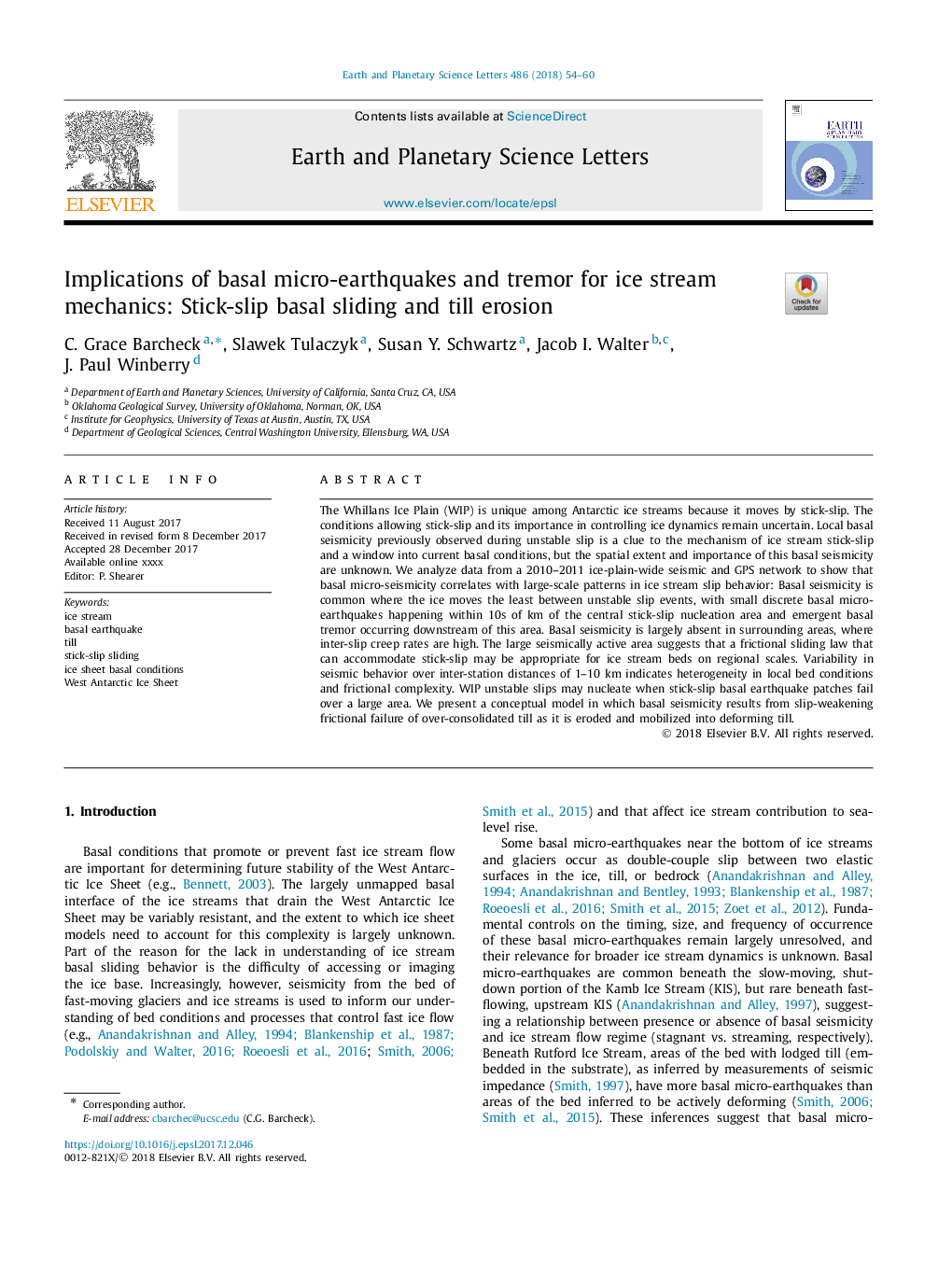| Article ID | Journal | Published Year | Pages | File Type |
|---|---|---|---|---|
| 8907101 | Earth and Planetary Science Letters | 2018 | 7 Pages |
Abstract
The Whillans Ice Plain (WIP) is unique among Antarctic ice streams because it moves by stick-slip. The conditions allowing stick-slip and its importance in controlling ice dynamics remain uncertain. Local basal seismicity previously observed during unstable slip is a clue to the mechanism of ice stream stick-slip and a window into current basal conditions, but the spatial extent and importance of this basal seismicity are unknown. We analyze data from a 2010-2011 ice-plain-wide seismic and GPS network to show that basal micro-seismicity correlates with large-scale patterns in ice stream slip behavior: Basal seismicity is common where the ice moves the least between unstable slip events, with small discrete basal micro-earthquakes happening within 10s of km of the central stick-slip nucleation area and emergent basal tremor occurring downstream of this area. Basal seismicity is largely absent in surrounding areas, where inter-slip creep rates are high. The large seismically active area suggests that a frictional sliding law that can accommodate stick-slip may be appropriate for ice stream beds on regional scales. Variability in seismic behavior over inter-station distances of 1-10 km indicates heterogeneity in local bed conditions and frictional complexity. WIP unstable slips may nucleate when stick-slip basal earthquake patches fail over a large area. We present a conceptual model in which basal seismicity results from slip-weakening frictional failure of over-consolidated till as it is eroded and mobilized into deforming till.
Related Topics
Physical Sciences and Engineering
Earth and Planetary Sciences
Earth and Planetary Sciences (General)
Authors
C. Grace Barcheck, Slawek Tulaczyk, Susan Y. Schwartz, Jacob I. Walter, J. Paul Winberry,
